#they call me mr. parallel spotter
Text
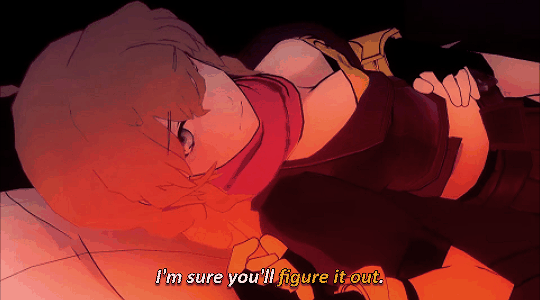
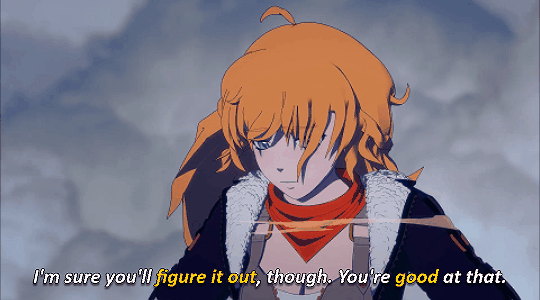
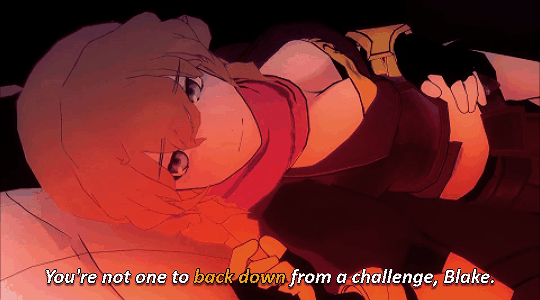
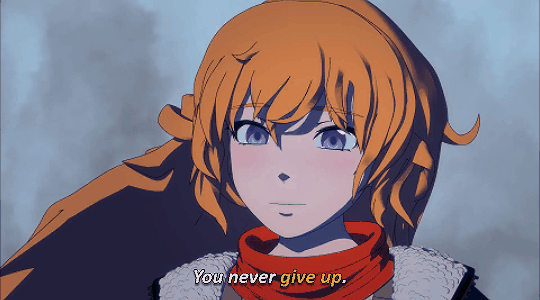
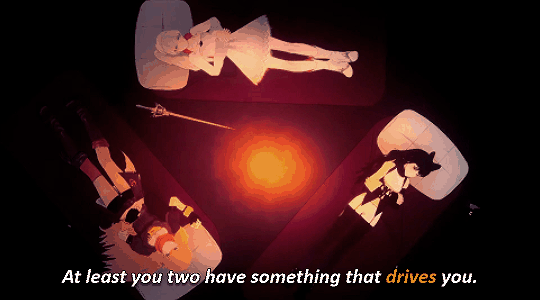
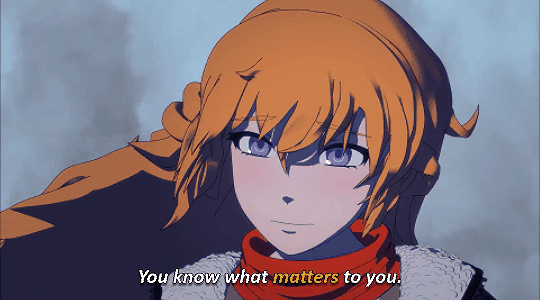
2x10 | 9x06
YANG + ADMIRING BLAKE throughout the years <3
#yang's been out here pining since v2 fr#they call me mr. parallel spotter#rwby#rwby9#rwby spoilers#bumbleby#blake belladonna#yang xiao long#my gifs
710 notes
·
View notes
Link
By Gary Brecher.Republished from the Radio War Nerd subscriber newsletter. Subscribe to Radio War Nerd co-hosted with Mark Ames for podcasts, newsletters and more!. Posted with THE EXILED.
There’s a gigantic, well-organized, extremely violent fascist group with tens of thousands of active members in Germany right now.
And nobody notices.
You’d think all the fascist-hunters would have sniffed it out by now, but it goes right by them as if these guys were invisible.
Which is odd, because this group is not trying to hide, or pretending to be harmless. They’re not shy about it, and it’s not just talk. They have quite a record. They’ve been rampaging for decades, and if anything they’re stronger now than they used to be. They’re closely linked to CIA and Nazi groups; they’re very busy beating, burning, and murdering minorities of all kinds, and boast quite openly about hating literally everyone who’s not a member of their own ethnic group and sect, even suggesting that members go on “hunting expeditions” against minorities which they’d already almost wiped out back in the 20th century.
This group recently held massive, open rallies in the cities of Germany, and it’s only in the last few years that the government has even attempted to ban the public symbols and salutes of this massive fascist group.
There’s something grotesquely comic about this. We have a swarm of fascist-spotters who’ve spent the last few decades waiting for fascism to emerge in Germany when it was marching around, shouting at the top of its lungs, beating minorities, celebrating genocide, and supporting ethnic cleansing right in front of their damn faces.
I’m talking about the Gray Wolves. And I defy anyone to find a more successful, out-front, no-kidding, massive, effective, ruthless fascist organization anywhere in the world. They’re adapting quickly, and even have their own fierce Wiki defenders.
Here are a few highlights from their long, successful career:
In 1978, Gray Wolves started pogroms against Alevi Kurds in Maras (also known as Kahramanmaras) in South-Central Anatolia.
Location is important here. Maras is due north of Aleppo across the Syrian border, NW of Kobane, and above all just up the road from Gazantiep. Gazantiep is a key city for right-wing Turkish nationalists, a city dominated not just by people who are ethnically Turkish but who identify as rightwing Turks of the most intensely nationalist kind. This kind of population lives in a state of siege, glories in that feeling, and is almost always willing to lash out against the sea of minorities they imagine surrounding them. That’s why Gazantiep keeps making the news as a nice convenient safe house for IS and their Turkish allies, some of whom killed 57 Kurds at a wedding in 2016.
It’s important to emphasize that people who are ethnically Turkish are not a bloc. Some of the bravest people on earth, languishing in the Turkish state’s prisons or buried in unmarked graves, are proudly Turkish by ancestry.
And then there are the young men who join the Gray Wolves. Those men are murderous fascists, and it’s cowardice to pretend not to see that.
Violence by these men against minorities has never stopped, but it hit its peak — more like the highest peak in a mountain-range of a graph — in 1978, before the Anglosphere had any handle on sectarian violence in the Middle East.
The target of the Gray Wolves in Maras was a double minority: Alevi Kurds. Alevi Muslims are often considered heretics by Salafists and other Sunni fundamentalists. They were massacred with impunity in Ottoman pogroms. Erdogan’s AK Party, which very much wants to revive Ottoman practice and Ottoman borders, openly considers the Alevi heretics fair game for the Gray Wolves’s death squads.
Those who were killed in 1978 were not only Alevi, but Kurds — and the Turkish state, which embraced Wilsonian ethnic nationality with a vengeance, a terrible vengeance, hates Kurds simply for being Kurds. So the Kurdish Alevi of Maras were a natural target twice-over.
The campaign against them built up for weeks, as pogroms usually do, with the unpredictable pace partly a result of working with unstable, violent mobs but also part of a strategy to terrorize the victims, who never know when things will go from bad (very bad) to even-worse.
The details of the massacre are very typical, sickening but not unusual:
Witnesses to the massacre.
Seyho Demir: “The Maras Police Chief at the time was Abdülkadir Aksu, Minister of the Interior in the last AKP government. The massacre was organised by MIT (the Turkish secret service), the Nationalist Movement Party (MHP) and the Islamists together… As soon as I heard about the massacre, I went to Maras. In the morning I went to Maras State Hospital. There I met a nurse I knew…When she saw me, she was surprised: ‘Seyho, where have you come from? They are killing everyone here. They have taken at least ten lightly-wounded people from the hospital downstairs and killed them.’ This was done under the control of the head physician of the Maras State Hospital. Everyone knows that such a big massacre cannot be carried out without state involvement. In the Yörükselim neighbourhood they cut a pregnant woman open with a bayonet. They took out the eight-month foetus, shouting “Allah Allah” and hung it from an electricity pole with a hook. The pictures of that savagery were published in the newspapers that day. The lawyer Halil Güllüoglu followed the Maras massacre case. The files he had were never made public. He was killed for pursuing the case anyway. Let them make those files public, then the role of the state will become clear.”
Meryem Polat: “They started in the morning, burning all the houses, and continued into the afternoon. A child was burned in a boiler. They sacked everything. We were in the water in the cellar, above us were wooden boards. The boards were burning and falling on top of us. My house was reduced to ashes. We were eight people in the cellar; they did not see us and left.”(EZÖ/TK/AG)
All accounts agree that the massacre not only happened with state collusion but state encouragement. No one was punished. Many were, in fact, promoted, and hold high positions in Erdogan’s government today.
That’s the pattern here: the Gray Wolves as the street-fighting wing of the state. The parallel is closer to Indonesian Islamists in 1965 than the SA in 1930s Germany, but so many people have trouble taking any fascism clearly unless it can be soldered to 1930s Germany that I may as well make the analogy for, as they say in the academic biz, heuristic purposes.
The Gray Wolves ideology is very widespread and acceptable in many (not all) communities in Turkey. This leads to a lot of more or less lone-wolf killings (as it were), as when a soldier who was a member of the Gray Wolves killed a fellow soldier for being an Armenian a few years ago.
Older readers might remember the attempted assassination of Pope John Paul II back in 1979.
The assassin was one Mehmet Ali Agca, a longtime member of the Gray Wolves.
He had a track record of killing leftists and other enemies on behalf of the “Idealists” (seriously, that’s what the Wolves call themselves):
“The weapon used in the Feb. 1, 1979, murder of a Turkish newspaper editor, Abdi Ipekci, for which Mr. Agca was convicted, was supplied by a member of the Idealist Clubs, according to the Turkish authorities. Other members helped Mr. Agca escape from prison. Still others prepared a false passport for him. And on the day of the killing, he went to the National Action Party offices.”
Note the familiar pattern: Ali Agca kills a leftist editor who’s annoying the Turkish state, gets caught, and manages to escape with a lot of help from Turkish intelligence.
They hardly bothered to hide their collusion in the escape. The Turkish state was killing a lot of leftists, a lot of intellectuals, a lot of minorities — the usual suspects for classic fascists like Ali Agca.
But as you older readers might recall, nobody in the media talked about Ali Agca as a Turkish fascist. He was, for Cold-War purposes, smeared as a Bulgarian agent.
The “Bulgarian connection” never made much sense, but it served the US/UK/Israel/Saudi intelligence agencies’ PR purposes. Remember, Turkey is NATO — very, very NATO.
NATO might survive the loss of many other small European states, but it could not survive losing Turkey. So the US/UK state will always side with the Turkish state and help them cover up fascist atrocities, blaming them on the Soviets until those useful patsies took their final dive.
Blaming Bulgaria rather than the obvious suspects, the Gray Wolves to which this thug Ali Agca had been murderously loyal all his life, was especially bizarre since there was an obvious sectarian motive: the Gray Wolves hate Christians, as they hate all other minorities, ethnic or religious, and make a point of staging provocations at all occasions when the remnants of what was once a huge Christian minority dare to show themselves in public.
Orthodox Christians are the Wolves’ preferred prey. They prefer not to do anything too bloody to high-profile Western targets like a pope, but when you squirt sectarian hate into weak minds and itchy trigger fingers for generations, some of the lads are going to pick the wrong victim.
Perhaps that’s what happened when Ali Agca went from NATO-approved murderer of leftists and Kurds, to shooting the Pope. We’ll never know, because it was quickly twisted into the ridiculous “Bulgaria did it” farce by the guys who enjoy a few cocktails with their opposite numbers from Ankara at all those NATO conferences.
And we’ll never know how much daily violence this massive fascist gang inflicts. Occasionally the Turkish state gets irritated enough to send a suicide bomber or two to kill Kurdish peace demonstrators, as it did in Ankara in 2015, killing 86 demonstrators and maiming a hundred more. But that state, our NATO ally, supports a whole madhouse of Arab and Turkmen jihadis as well as its own stable of disposable Gray Wolves assassins, so it may never be clear whether it was the Wolves, precisely, who pressed the detonators.
But it’s a statistical certainty that somewhere along the long line from greenlighting an attack like this and sending red-hot ball bearings splattering into the bodies of teenagers with peace banners, many of the men involved were members in good standing of the good ol’ Wolves.
Violence by the Gray Wolves is a constant in Turkey, usually unreported — especially now that Erdogan’s party has imprisoned thousands of journalists and intellectuals, and terrorized the rest into quietism or collusion. We may never know how many Kurds are murdered daily in the southeast of Anatolia, because no one who matters, in the Turkish state or its many powerful allies in the West (e.g. the Michael Flynn story) want you to know about it. It’s rare for those stories to make the news at all, but God knows you can’t forget them once you’ve read them.
In fact the Gray Wolves are going mainstream, and winning a lot of votes.
Fascism is mainstream in Turkey, getting more mainstream all the time — and has been since the violent dissolution of the Ottoman Empire. The Gray Wolves have quite a pedigree, a classic fascist genealogy.
Fascism is often strongest in the ruins of a defeated empire, and that was the situation in the former Ottoman Empire in the 1920s. The Empire had once ruled from Central Europe to Iraq, flowing and ebbing over the centuries (with a peak in the 16th century). At its peak, it was a fearsome conquering force.
There’s a great novel by the Albanian writer Ismail Kadare detailing the unstoppable waves of special forces that the Empire could unleash on strongpoints that held out against conquest.
The Ottomans took a long time to fall from that 16th c. peak. They were still around, partly because Britain and France always supported them against the bogeyman of the late Victorian Era, the Russian Threat.
Propped up by the two big powers of Europe, the Empire managed to survive a coup in 1908 by young officers who would go on to a career in defeat and genocide, because they guessed wrong on which side would win the oncoming Great War.
The Young Turks, as these officers were called, sided with the up-and-coming, efficient military of the neighboring empire: Germany. They guessed wrong, but not before they managed to exterminate the harmless Armenians who had recently been patronized as Turkey’s “model minority” for their docility. And this genocide went so well, so quietly, that Hitler, contemplating the genocide of the European Jews, allegedly demanded of any squeamish nay-sayers “Who remembers the Armenians?”
You get a lot of horrible echoes like that in this story. At any rate, no one cared to remember or notice the extermination of the Armenians, but the winners at Versailles were typically vengeful against the former Ottoman Empire — not by any means for wiping out the Armenians, but for being German allies, and losing.
Britain and France, now joined by the US, were as vengeful toward the former Empire as they had been lenient during its bloody final years. Ottoman rule over non-Turkish territory was erased. For a few years there was some doubt whether even Anatolia would remain a Turkish state.
Then, as most of you know, came Mustafa Kemal, soon to become Kemal Ataturk, a hero of Gallipoli (a Turkish/Ottoman victory that stood out proudly in the great defeat).
Ataturk was a typical elite young officer of the early 20th c. Those were very dangerous people, those young officers. Often impressive individuals, but completely ruthless and immensely fond of violence. That goes for all of them, right across the Continent — Hell, right across the world.
Ataturk formed a nucleus of former officers from the Great War. (Again, the international echoes are clear enough; suffice to say that these guys were the most dangerous, formidable demographic in a few generations, perhaps since the emergence of the Napoleonic elite.) They fought well, and then they went about making Turkey a monoethnic state, without mercy.
For a while, that state was professedly secular, but since it had already killed or driven out most religious minorities, the monoethnic state became, under the AK party, avowedly mono-sectarian as well.
The current chant of the Wolves many, many supporters is “My heart is Turkish and my soul is Muslim!” You must be both: ethnically Turkish and orthodox, Sunni Muslim as well. No mercy for anyone who fails either test, which means that a lot of Kurds, a lot of Alevis, a lot of secular Leftists, end up dead or in prison.
The evolution of the Gray Wolves is a classic fascist Genesis story, and the behavior of its hundreds of thousands (perhaps millions) of supporters is classic fascist violence. Why don’t more people notice that?
I hate to speculate, because the range of possible answers all boils down to cowardice, conformity, and the odd Euro-centrism one finds in the strangest places. They don’t get noticed because they’re not European, maybe? Fascism of the 1930s was European, and that’s the only kind amateurs notice? Odd, because Turkey is European enough to be the cornerstone of NATO.
This would not be the first time that the interests of what you could call the NATO Deep State aligned all too perfectly with the more gullible pockets of the Left. In fact, it’s very closely related to the phenomenon of not noticing, or trying very hard not to notice, the sectarian ultra-violence of the Syrian “rebels.” But this time, since Turkey is a NATO ally, it’s the violence of the state and its fascist proxies that is ignored. I struggle to come up with any other reason that the Gray Wolves get so little attention.
All I know is that we have a massive, ultra-violent, highly effective, classically fascist movement killing minorities every single day, and there’s an odd silence about it.
I would love to ask one of the innumerable online fascist hunters why they hunt stray curs and slink silently past the cold stare of the Gray Wolves. Perhaps it’s not so much any of the excuses I suggested above; perhaps some hunters just prefer smaller, easy prey to the real thing.
Gary Brecher is the nom de guerre-nerd of John Dolan. Buy his book The War Nerd Iliad. Hear him read his comic memoir Pleasant Hell in audiobook format.
Subscribe to the Radio War Nerd podcast & newsletter!
#war nerd#gary brecher#john dolan#gray wolves#fascists#turkey#young turks#kemal atatürk#kurds#alevi muslims#NATO#erdogan#ottoman empire#neo-ottoman empire#ethnic cleansing#ali acga#turkish nationalists#turkish nationalism#nationalism is cancer#imperialism
21 notes
·
View notes
Text
12 Hidden Athens Gems Spotted by Locals
What is it that makes Athens special to live in and experience on a day-to-day basis?
If you ask our Spotters, that would be the unpretentious Mediterranean-meets-Oriental tsipouro and meze bars/restaurants; the indie cinemas (always playing movies in their original language with Greek subtitles); it’d be the sidestreets in the centre that so delicately strike the balance between decline, neglect, vitality and reappropriation, or the great weather that makes exploring in the city a joy of its own.
Here are some of our picks for some of the most unique, locals gems in Athens, in the words of our very own team of Spotters.
Stunning views from atop a neglected secret
Aghios Ioannis Park (by Nikos Palavitsinis)
Well, this kind-of park isn’t the best choice for a walk, but it has a breathtaking view! It is located behind the Aghios Ioannis Metro Station (red line) and it’s quite steep, which makes it almost impossible to climb, apart from a small path that was made a long time ago and runs through it. Along the path, you will find pensioners playing backgammon and chess in groups!
It’s quite neglected but it’s charming in its state of decay. It’s really interesting to walk around and see the houses built on the other side of the hill, as most of them look like village houses, although built in the center of Athens. Don’t visit after nightfall, just to be on the safe side.
The view from Aghios Ioannis Park is one of the best in Athens, although the surrounding area and the park could be preserved a bit better! —Nikos Palavitsinis
Athens urban street life distilled, complete with bikes
Melanthiou Street (by Andreas Papadopoulos)
There is a small street called Melanthiou in the area of Psiri, in the centre of Athens. In the last few years, this area transformed from a drug area into a cyclists’ joint. One of the pioneers of this movement is Welsh Gareth Jones, who came from London to open a bike store here.
At Melanthiou street you will find everything and everyone who has ties to biking philosophy in the city: the bike store VCA, Handlebar cafe, the Bondex cyclist couriers, along with Silver 925 graffiti store and creative design studio Pi6. You can come and drink your coffee while your bike is being fixed or eat something at very low prices. The best time to visit Melanthiou street is in the evening, when people are gathered at small tables by the road and it all creates a single company.
With a bike or not, take a break at this spot during your city walk in Athens’ center. You will probably meet me here while I’m fixing my bike again. –Andreas Papadopoulos
A century-old house turned bar
Syntrimi (by Dimitris Hall)
My very first time at Syntrimmi, I discovered its mini-atrium that could very well be the foyer to my personal heaven. I returned for their literally unbeatable wine & coffee prices. Then I went back for their super-welcoming environment for quiet work in the afternoons. Then I went back for their music choices which fit my taste like a glove (Ibrahim Maalouf, Yes, Django Rheinhardt)…
Syntrimmi has become my favourite spot in the city!—Dimitris Hall
Super-local lunch dead in the centre
Biftekares (by Nikos Palavitsinis)
If all my articles for Spotted by Locals were a crown, this would be the crown jewel! I am so proud to introduce this place, as this is something that merely 1% of Greeks know about! Biftekares is a really small spot, with 6-7 tables, mainly outside, overlooking Syntagma Square. The old man that owns it prepares 4-5 dishes, like delicious burgers, small pizzas of his own making, French fries, omelet, Greek salad and sausages. That’s it!
Keep in mind that once you locate the building, you just go in and take the elevator to the 9th floor. No signs there, no nothing. Even the doorman won’t let you know about the canteen.
This is probably the best hidden secret of Syntagma! —Nikos Palavitsinis
Large botanical garden few Athenians know about
Diomidous Botanical Garden (by Pantelis Mavrodopoulos)
The Diomidous Botanical Garden is the largest botanical garden of the eastern Mediterranean. It was founded in 1952, and in 1975, after completion of landscaping, it was opened to the general public. In its area of 470 acres you can find trees and bushes can be found from all over the world, as well as plants mentioned in Greek mythology and history, like the myrtle of Aphrodite and Socrates’ hemlock.
If properly prepared, you can have a picnic under the shade of the trees, in one of the outdoor monastery-type tables, where you can meet other groups or families (or even me?) rolling around on the grass. —Andreas Papadopoulos
Festival cinema with bar attached
Mikrokosmos (by @miss_psipsina)
Call it a cinema, call it a bar. Personally, I can’t really decide what it is, since I use it as both.
Film festivals of every kind take place here during the year while the normal selection of the films featured in Mikrokosmos is of the best kind and from all over the world. But as I said, there is also the bar!
I’ve spent hours laughing dead to the endless jokes of the owner and his wife. While sitting at the bar staring at the Tom Waits wallpaper in the back, I sometimes even forget I want to go home… —Margarita Kalogeropoulou
Best street food in Athens?
Feyrouz
If you are wandering around Athens and are looking for street food, there is a place you should not miss! In the hyped, central neighborhood around Aiolou Street, you can have the most tasty lechmatzoun of the city! Mrs Feyrouz, who comes from Antioch in Turkey, bakes the lechmatzoun, and her sons, Andreas and Savvas, serve them. But most of all they create a gastronomic tour for you! They have a story to tell you about every delicious dish their mother makes and they share this story with you.
Since the very first time I visited Feyrouz I have visited them again and again. Not only because of how gastronomically happy they make me but also because you can feel that this family runs their small business with love for food and also love for the tradition that is related to their food!
Feyrouz was voted as the best place for “street food” in Athens and we are really proud of them! —Marilena Salamanou
Art and drinks at the old train
To Traino sto Rouf
To Traino sto Rouf (‘The Train in Rouf’) is a well preserved old train in its natural environment, a train station. Theatrical plays, music performances and art exhibitions take place in the train wagons. The theater wagon is reformed as a theatrical scene, the wagon bar, with its wooden decoration and low lights creates a mysterious, retro atmosphere, while the restaurant wagon is as if taken from those old time movies, where so many things could happen on a train…
The schedule varies from season to season. In the summer you can have a drink of wine on the platform and in winter you can dine in the wagon restaurant, experiencing a unique atmosphere. Feels like you are in a movie… Anna Karenina maybe? —Sofia Skioti
The city’s most exciting overgrown stream
Rema Pikrodafnis (by Dimitris Hall)
Among the blocks of flats, the avenues and the urban “growth” lies a different kind of growth. One that seems to be frozen in time together with its surroundings.
Rema Pikrodafnis is one of the few remaining relatively untouched streams in Athens. You can see the areas it runs through by clicking here. Polluted waters, illegal dwellings tacked on the stream itself, an overgrowth of reeds everywhere… It’s a forgotten, completely different world. You’ll find such things as chicken coops, tin shacks, tortoises, frogs and great views over the stream from the winding, labyrinthine roads that run parallel to it. Some might say it’s not an interesting sight and might wonder why anyone would want to visit a place such as it. I for one love this seemingly abandoned part of the city and really think it’s a symbol of the part of Greece a lot of people choose to forget. —Dimitris Hall
Innovative Greek concept store
Graffito
Since Graffito opened its doors in 2012, it has been supporting new Greek entrepreneurs while bringing first-class design from all over Europe and the world. If you’d like to explore what Greek creativity and design has to offer, this is your spot. From deli to fashion, this place gathers some of the most up and coming Greek brands.
I love it for gift shopping, cause simply I can find special gifts for everyone here — from my parents to my best friend and even my dog. Moreover, there is a coffee shop inside the store which is ideal for getting a break from shopping with an espresso and some delicious cake. —Angeliki Georgokosta
Fertile breeding ground for upcoming creatives
Neon Raum (by Aigli Andritsopoulou)
Upcoming creatives have finally found the right space to showcase their art in the urban core. Neon Raum is more than just another showroom and photography studio promoting Greek designers, it is a fertile breeding ground for artists and hoarders of unique moments of collaborative artistic practice, who have the need to express themselves and unlock their creativity by being part of a community that speaks a global language.
Innovative ideas by colourful individuals make Neon Raum the city’s hub of a limitless world of fashion, art and culture focusing on the beauty in the process.
Extra tip: Before you visit, check Neon Raum’s Facebook page for any popup events. Join their Sunday specials and get the chance to chit-chat with the designers while brunching in Raum’s sunbathed loft. —Aigli Andritsopoulou
Indie-underground apartment
Velvet Room (by The Callas)
Velvet Room is an actual room, a very typical central Athens apartment which has been turned into a live music, performance, art, party and seminar venue. When there aren’t any events taking place, Velvet Room is the studio of the band The Callas.
I mostly go there for the music. It hosts some of the best local gems as well as international artists. Some of my favorite acts like Chickn, Kid Flicks, Victory Collapse and Angelos Kyriou have played there.
Don’t miss the opportunity to get a glimpse of the Athens indie – underground scene. —Angeliki Georgokosta
For more hidden gems, check out the Spotted by Locals Athens cityblog.
Source Article
The post 12 Hidden Athens Gems Spotted by Locals appeared first on Aguadillaiceskatingarena.
Read full post at: http://www.aguadillaiceskatingarena.com/12-hidden-athens-gems-spotted-by-locals/
0 notes